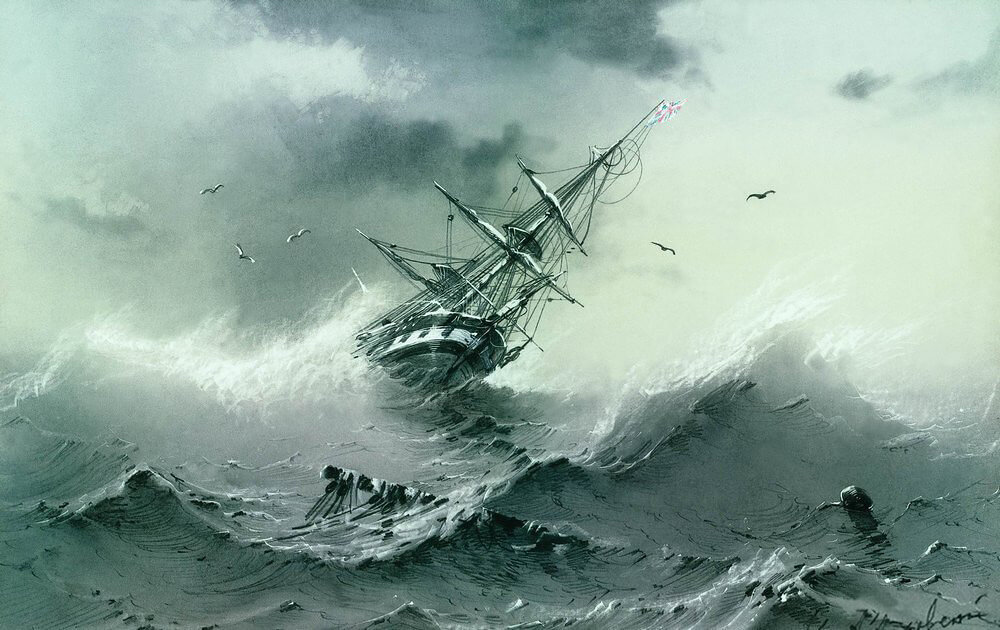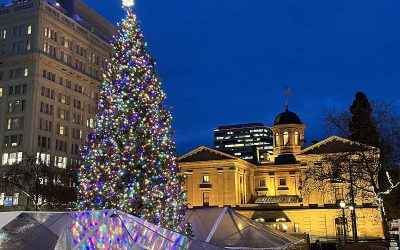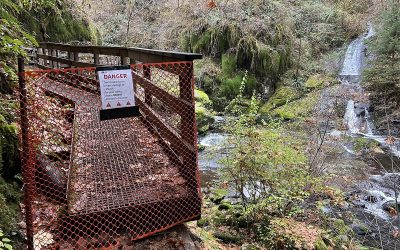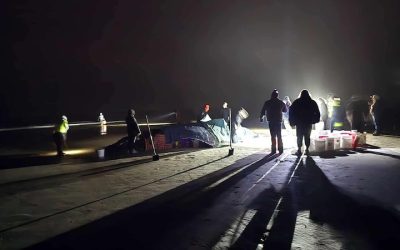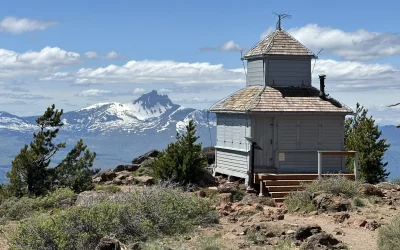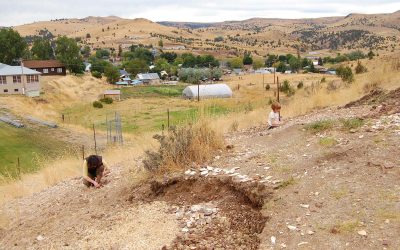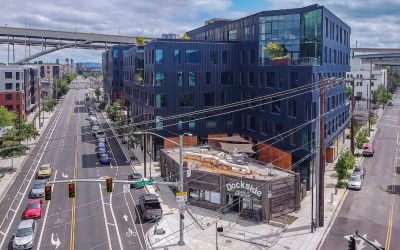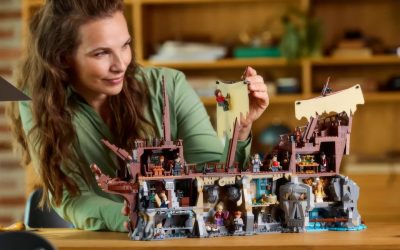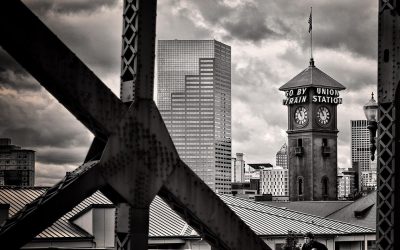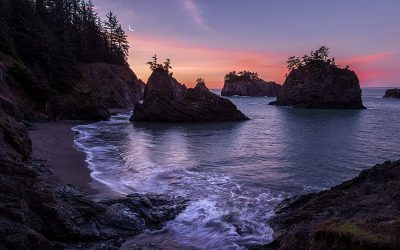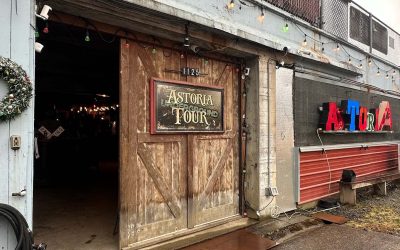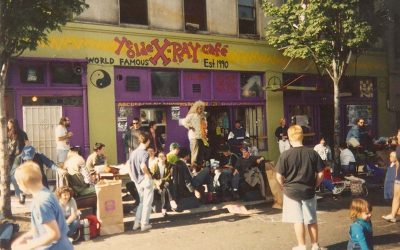The remains of a 17th-century Manilla Galleon were recovered from a sea cave near Manzanita. The timber, believed to have come from the hull of the Santo Cristo de Burgos, was discovered by local beachcombers in 2013. After being stalled by COVID restrictions, the excavation process was expedited, allowing the archaeology firm, Search Inc., state parks, and local agencies to team up in an unprecedented effort to salvage a famed piece of local history.
Santo Cristo de Burgos: The Legend of the Beeswax Wreck
Scattered around the vicinity of the Nehalem Spit, there are darkened bars of beeswax, etched with black markings, rotting timbers, and shards of white china, still bearing their faded blue designs. If you came across these artifacts, you wouldn't be alone in wondering where they came from, or if they might have been a part of some ancient shipwreck.
It's certainly plausible. More than 2,000 ships are said to have been lost in what is known as the Graveyard of the Pacific, which stretches from Tillamook Bay to Cape Scott at the northwestern tip of Vancouver Island. 300 of those ships wrecked off the coast of Oregon, where jagged shorelines and epic swells are known to send sailors to their deaths.
Many of those shipwrecks have been memorialized and turned into historical landmarks. Tourists can still visit the site of the Peter Iredale at Fort Stevens State Park, or the J. Marhoffer in Depoe Bay. Both are popular, and they're a huge part of the local narrative, but they aren't legends like the Santo Cristos de Burgos.
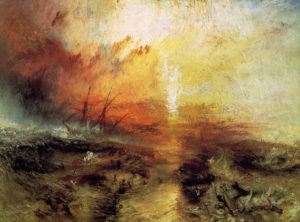
The Slave Ship J. M. W. Turner
When the first European settlement in Oregon was established in 1811, the local Nehalim tribe approached the settlers offering to trade bricks of beeswax and candles. Honey bees aren't native to North America; they were introduced in the 17th century, so naturally, the settlers were curious about where the wax came from. When asked, the local tribes told the story of a shipwreck, passed down in their oral traditions, that had occurred on the Nehalim Spit more than a century earlier. They said that the survivors had come to live with their tribe and that many of those survivors had families, whose descendants can still be found in the area today.
The shipwreck, which was rumored to have been visible on the spit at low tide, was mined by tradesmen, its goods sold in markets, and taken for personal use. It became a local legend, written about in novels and historical accounts, where it was referred to as the Beeswax Wreck. This legend lived on through the centuries and eventually spread until it caught the attention of Stephen Spielberg, who made it the subject of a major motion picture, The Goonies.
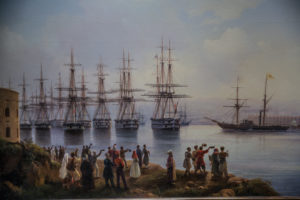
Ninara / Flickr
The story of the Santo Cristo de Burgos is older than the state of Oregon--and indeed older than most European exploration of the Pacific Northwest. It begins on the island of Bagatao in the Philipines, where the ship was first constructed.
One of the reasons settlers may have been so fascinated with the Santo Cristo was because of its size. By the mid-17th century, the shipyard was building ships that could hold more than 1000 tons of cargo. While the ship's dimensions are not well known, models of this type required more than 2,000 trees, cut by the local Philippine conscripts, and constructed by Chinese craftsmen, all under the supervision of the Spanish. It must've been an impressive sight.
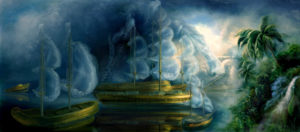
Ekaterina Valinakova / Flickr
The captain of the Santo Cristo was a Basque nobleman named Don Bernardo Iñiguez del Bayo y de Pradilla, formerly the mayor of the Mexican mining town, San Luis de Potosí. He earned the position after constructing a large ditch around the town, which saved the locals from disastrous floods that devastated the area. Afterward, he was named the head of the mounted cavalry in the capital of New Spain, a title he maintained while acting as captain.
For 250 years, Manilla Galleons followed the same trade route. It was a 12,000-mile stretch of arduous seas, delivering exotic Asian goods from the Philipines and across the northern Pacific, to Acapulco, Mexico.
As captain, Don Bernardo first sailed the ship from Acapulco to the Philipines in the spring of 1691. His second voyage, which left in the summer of 1692, ended in disaster. The ship's masts were destroyed in a storm in the San Bernardino straits, and it was forced to return to port, where much of the ship's crew was penalized. Don Bernardo was cleared of charges and allowed to return on a third voyage in 1693, carrying Chinese silks, the now-famous beeswax, and Chinese porcelain.
Nobody knows when the ship wrecked on Nehalim Spit, thousands of miles off-route, but it was believed to have occurred sometime between November 1693 and February 1694. The ship likely encountered windstorms in the north Pacific, while suffering from a lack of essential crewmembers and scurvy. Subpar repairs while at port may have exacerbated the situation.
Many believe that it got caught in the coastal current, which flows northward during the winter due to the Aleutian low-pressure systems. It would've been impossible for the crew to correct their course once they had come close to shore. This is all speculation, but it is based on what we know of the ship and the conditions in the area.
Identifying the Shipwreck
The natives and settlers who first discovered the Santo Cristo didn't know what the ship was called, or where it came from. For centuries, it was known only as the Beeswax Wreck. But even then the legends were popular enough to inspire a major motion picture.
Not much was known until the mid-2000s when a group known as the Maritime Archaeology Society (MAS) began studying thousands of pieces of Chinese porcelain, found near the Nehalim River. They determined that the porcelain was from the Kang-Xi period between 1661-1722 when the shipwreck occurred.
This led the MAS to believe that the Beeswax Wreck was one of two Manilla Galleons that were lost at sea between 1650-1750. At first, it was believed that the artifacts came from the San Francisco Xavier, which disappeared in 1705. A magnitude 9.0 earthquake sent a tsunami sweeping across the coast in 1700, leading investigators to believe that anything left behind would've been destroyed in its path. But after geological research, investigators were able to determine that the porcelain pieces were under the sediment caused by the tsunami, which meant that the Beeswax Wreck was in fact the Santo Cristo de Burgos.
Finding the Missing Pieces
Inspired by The Goonies, groups of kids would explore the coast, hunting down hidden treasures and signs of shipwrecks. One of those kids was Craig Andes, a now grownup commercial fisherman in northern Oregon. He contacted the MAS to tell them about pieces of timber he had found in a sea cave in 2013.
MAS president Scott Williams was skeptical. He couldn't believe that fragments from a 300-year-old ship would survive the tumultuous Oregon coast. But lab results indicated that the wood was taken from Anacardiaceae, a species found in Asia, and that the tree had been felled somewhere around 1650. Only a few Manilla Galleons had gone missing during that time, so they were able to determine that the timber did in fact belong to the Santo Cristo.
After conducting an investigation in 2020, archaeologists came to the conclusion that the timbers had drifted into the cave, potentially during the tsunami in 1700.
The 2022 effort to recover the timbers was a sticky operation, requiring the work of local authorities. In order to remove the wood, the team would have to wait until the perfect time, when the tide was low enough to allow them to reach it, and they would only have a 90-minute window to do so. Rescue swimmers from the Fire Department stayed close on jet skis, while teams with ropes monitored the situation from the cliffs above.
Craig Andes watched as they recovered the missing pieces from the ship, more than a decade after he had found them. The timbers can now be found at Columbia River Maritime Museum in Astoria, alongside exhibits of beeswax and porcelain.
The timbers are more than just bits of exotic wood. They're proof that the shipwreck was real, satisfying the curiosity of generations, and confirming legends that date back centuries. The MAS still believes that the ship is beneath the water near the coastline, and they've narrowed down several large objects that they plan to explore. Maybe they'll get lucky. Who knows?
We hope you enjoyed this article. Ready for more Goonies? Hit the link here to check out The Goonies Road Trip which features spots you can see today where the movie was filmed in Oregon.

